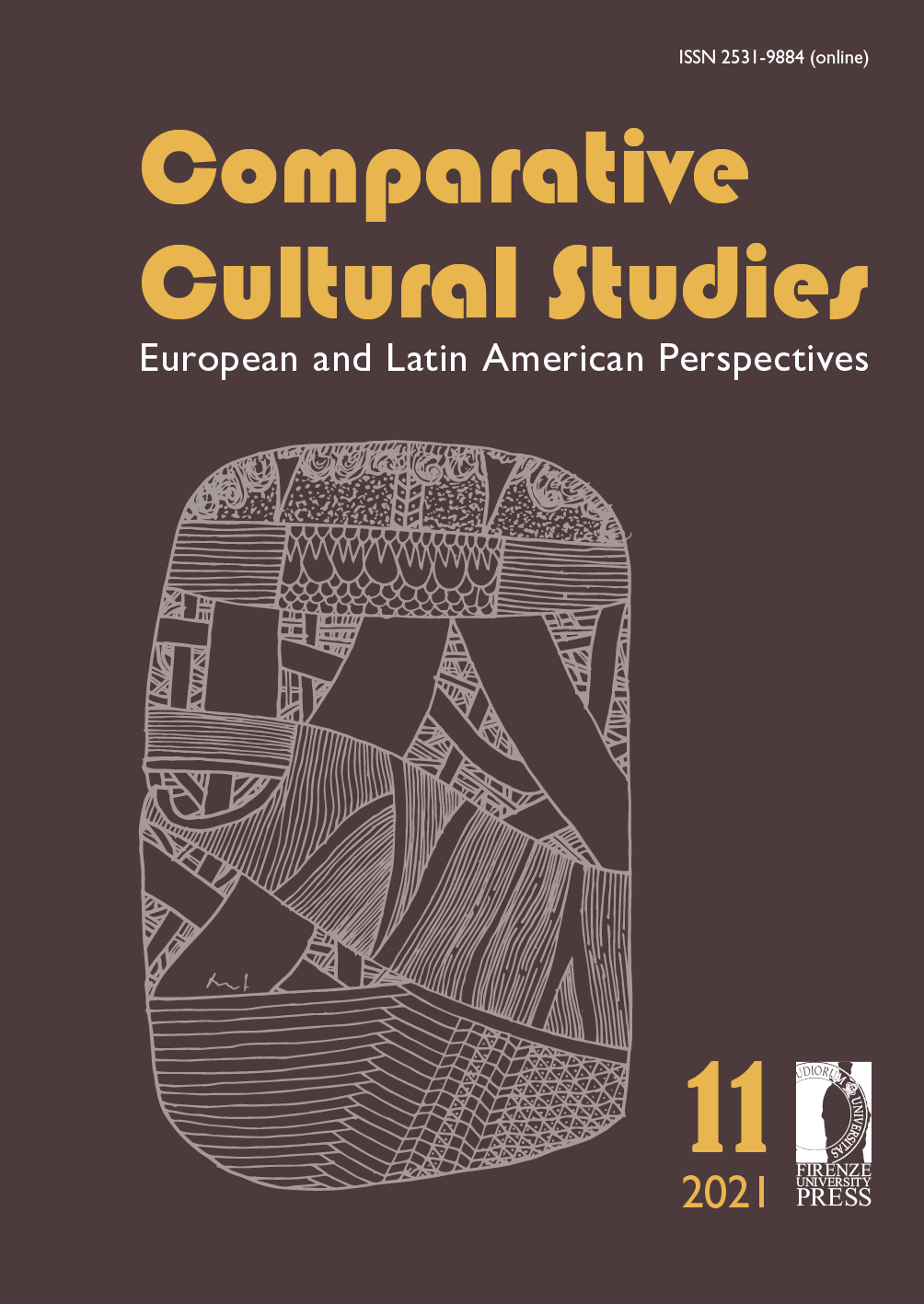Polishing Diamonds in Havana: A Personal Account of the Flight of a Jewish Refugee to Cuba, 1938-46
DOI:
https://doi.org/10.13128/ccselap-12518Palabras clave:
Cuba, industria de diamantes, Holocausto, refugiados judíos, Segunda Guerra MundialResumen
Miles de refugiados judíos europeos fueron aceptados en la isla de Cuba a comienzos de la Segunda Guerra Mundial. El autor proporciona una exclusive imagen de la época a través del relato de primera mano de su madre sobre la salvación de su familia que se encontró allá como refugiados contra la Europa ocupada por los nazis. El artículo se basa en fuentes primarias que incluyen la historia de la madre de la auto-ra, fotos y documentos, y coloca el evento en el contexto de la política, la economía, y la percepción cubana del tiempo. Los refugiados introdujeron la nueva industria de diamantes facetados en Cuba, aunque, al final, duró poco. El artículo muestra la aco-gida de los refugiados, respeto colectivo, y el trabajo en equipo como beneficio mutuo.
Descargas
Citas
American Jewish Joint Distribution Committee Archives, (n.d.), <https://archives.jdc.org/>.
Bauer Yehuda, My brother’s keeper: A history of the American Jewish Joint Distribution Committee 1929-1939, Philadelphia, The Jewish Publication Society of America, 1974.
Bejarano Margalit, The Jewish community of Cuba: Between continuity and extinction, in «Jewish Political Studies Review», vol. 3, nn. 1/2, 1991, pp. 115-140.
Bejarano Margalit, The Jewish community of Cuba: Memory and history, Israel, The Hebrew University Magnes Press, 2014.
Finkels Kreith Marion, Diary 1943–1945, Kreith Family Archives, 1943-1945.
Finkels Kreith Marion, Personal interviews, 2012–Present.
Frolich Marion, Personal interview, 2014.
Guede E., Pasado y presente de la industria del diamante en Cuba, Bohemia, November 7, 1948.
Kreith Frank, Sunrise Delayed - A Personal History of Solar Energy, Scotts Valley (CA), CreateSpace Independent Publishing Platform, 2014.
Kornbluh Peter, Cuba’s welcome to a Covid-19-stricken cruise ship reflects a long pattern of global humanitarian commitment, in «The Nation: Foreign Policy», March 21 2020; at the moment it is available at: , consulted on 20 September 2020.
Lande L., Di diamentn industrie in Cuba. Havaner Lebn Almanach, 1944.
Laureys Eric, Meesters van het diamante, Tielt, Lannoo, 2005.
Levine R.M., Tropical diaspora: The Jewish experience in Cuba, Gainesville, University Press of Florida, 1993.
Levinson Jay, Jewish community of Cuba: The golden age, 1906–1958, Nashville, Westview Publishing, 2006.
Maitland Leslie, Crossing the borders of time: A true story of war, exile, and love reclaimed, New York, Other Press, 2013.
Manning Jeanne, A time to speak, Paducah (KY), Turner Publishing Co., 1999.
Parks H.W., Making law of war treaties: Lessons from submarine warfare regulation, in M. N. Schmitt (ed.), International Law Studies - Volume 75, International Law Across the Spectrum of Conflict, Essays in Honour of Professor L. C. Green On the Occasion of His Eightieth Birthday, Newport – Rhode Island, Naval War College Press, 2001.
Sjenitzer-Sanders Tineke, Jewish diamond workers find refuge in Cuba. [Unpublished paper]. Israel, Hebrew University, 2011.
Thomas G., Witts M. M., Voyage of the damned, New York, Stein and Day, 1974.Truesdale R., Kreith J. (Directors). (2017). Cuba’s forgotten jewels: A haven in Havana[Film]. <https://forgottenjewelsfilm.com/>.
Further Reading
The following references were useful for the research. Articles and books listed in this section are provided for the reader wanting more information.Behar Ruth, An island called home: Returning to Jewish Cuba, New Brunswick, Rutgers
University Press, 2009.
Corrales Maritza, The chosen island: Jews in Cuba, Chicago, Salsedo Press, 2005.
De Vries David, Diamonds and war: State, capital, and labor in British-ruled Palestine, New York, Berghahn Books, 2010.
Engle Margarita, Tropical secrets: Holocaust refugees in Cuba, New York, Henry Holt & Co., 2009.
Epstein E. J., The rise and fall of diamonds: The shattering of a brilliant illusion, New York, Simon & Schuster, 1982.
Erdman Paul, Diamonds are not forever, in «The New York Times Book Review», June 20, 1982; <https://www.nytimes.com/1982/06/20/books/diamonds-are-not-forever.html>.
Lanza M. B. (& authors incl. González López, R. M.), Presencia alemana en Cuba. Deuts-che Spuren in Kuba. Mapa plegable etnográfico. Escala 1:2,488,000, La Habana, Edi-ciones GEO / Fundación Fernando Ortiz, [Pamphlet], 2008.
Klein Arthur, An unplanned roundtrip, Falls Village (CT), Hamilton Books, 2009.
Palmer G., Gateway to the promised land, in «Liberty», 21(6), 14-15, February 5, 1944, 38.
Richman B.D., How communities create economic advantage: Jewish diamond merchants in N e w Yo r k, in «Law & Social Inquiry», 31(2), Spring 2006, pp. 383-420.
Ronald Robert, Last train to freedom: A story of a Holocaust survivor’s travel to America, Self-published, 1997.
Rosshandler Felicia, Passing through Havana: A novel of a wartime girlhood in the Carib-bean, New York, St. Martin’s Press, 1984.
Sapir Boris, The Jewish Community of Cuba: Settlement and Growth, New York, J.T.S.P. University Press, 1948.
Descargas
Publicado
Cómo citar
Número
Sección
Licencia
Derechos de autor 2021 Judith Kreith

Esta obra está bajo una licencia internacional Creative Commons Atribución 4.0.
Esta licencia permite a terceros compartir (copiar y redistribuir el material en cualquier medio o formato) y adaptar (remezclar, transformar y crear a partir del material para cualquier finalidad, incluso comercial), siempre que se reconozca la autoría y la primera publicación en esta revista (La Revista, DOI de la obra), se proporcione un enlace a la licencia y se indique si se han realizado cambios en la obra.







